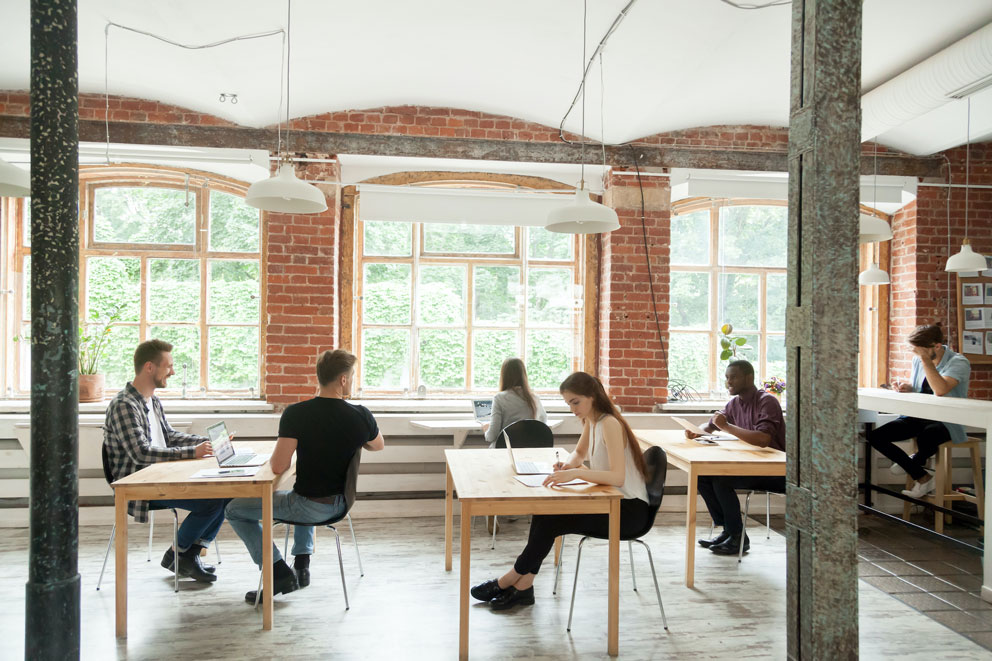Office hubs, home offices pace and the great outdoors on drawing board
- Pandemic forces rethink on design of homes and office hubs
- Communities will need to better serve flexible work/life balance
- Surge in bike use puts connectivity at top of the agenda
Community office hubs, flexible home office workspaces and more versatile outdoor spaces are on the drawing board as Frasers Property Australia considers what its communities will need in a post-COVID world.
The COVID-19 pandemic has highlighted the importance of access to safe and versatile outdoor spaces that act as vital community meeting places, well connected by walking and cycling paths. Home offices and digital connectivity are also top-of-mind with millions of Australian office workers working from home during the pandemic.
Cameron Leggatt, Executive General Manager Development, Frasers Property Australia says peoples’collective experience of the coronavirus pandemic will necessarily influence its design of future communities.
“Work needs are big consideration. We expect a shift in demand from buyers looking for greater flexibility to work from home, a trend many global companies have already acted upon,” Mr Leggatt says.
Proving the point, Twitter CEO Jack Doresy recently gave employees the permanent choice to work from home or the office.
“Traditionally our customers may have chosen a community, in part, because of location and accessibility to work via roads or public transport.Looking ahead, this choice may be re-focused on communities that enable them to work more effectively from home or closer to home.
“Community office hubs within residential communities may be a natural progression. These spaces might offer flexible work environments,where people could drop in as required and access infrastructure they might need when away from the main office, such as printing or video conferencing facilities.
“We also need to rethink office spaces within the home. Many homes currently have desk spaces in the main living space, but the pandemic working-from-home experience has highlighted the inadequacy of some designs when considering a more permanent arrangement.
“Perhaps there’s an opportunity to design more flexible spaces within the home that can be repurposed into a private home office, which enable a work/home divide, while still being connected.Providing a visual connection to nature is another consideration.
“Our workplaces have had to become more agile during the pandemic. More agile home spaces could be something home buyers demand in the future.”
Outside the home, Mr Leggatt says the pandemic has shone a light on the importance of well-designed public spaces and the need for greater access to walking and cycle paths.
“What has become clear during the pandemic is the important role public meeting spaces play in our communities. In the future, these must balance the need for safety with the desire for connection,the definition of which has changed as digital technology take-up has expanded during the pandemic,” he says.
Academics are researching how the pandemic may change the way public spaces are designed. The Impact of COVID-19 on Public Space: A Review of the Emerging Questions report suggests it will give urban designers the opportunity to create more space for pedestrians and cyclists,making cities greener.
The report notes that in Milan, Italy, there are new plans to widen footpaths and provide 35 kilometres of new bike lanes. It suggests streets might also need to be redesigned to meet other business needs, such as accommodating greater numbers of online deliveries.
“We’re asking ourselves plenty of questions when it comes to the future of the public amenity we provide,” Mr Leggatt explains.
“For instance, how can we make our streets,bike lanes and pedestrian pathways safe for a variety of practical future uses?Are they wide enough? Do we need further separation between bikes, cars and pedestrians?“
Our green spaces are vitally important for community and individual health and wellbeing. During the lockdown we saw people gather in parks and sporting ovals across the nation.What sort of infrastructure would make these meetings safer and more comfortable? Should we consider the provision of personal, outdoor workout spaces?”
Connectivity both inside and outside the home will play a big role. The spike in bike sales during lockdown reinforced the opportunity here. A survey by cycling organisation Bicycle Network found 73 per cent of people would use their bicycle more to access essential services during the pandemic.
At the height of Australia’s community restrictions in April some bicycle stores were selling more bikes than they would during the typical pre-Christmas rush.
“The trend of increased bike use is likely here to stay and it’s something we must help facilitate further through design,” Mr Leggatt says.
“If people can commute easily by bike they will, and this also means being able to access essential services within an easy walk or bike ride from home. If more people are cycling, we need to think about how we will keep pedestrians and cyclists safe, how we will cater for cyclists at their destination point further than we currently are,and what role we can play in encouraging cycling.”
Connectivity also refers to connecting online. Internet speed, smart home system sand ways to connect,regardless of where you live, will become high priorities.
“We have a big opportunity to develop new ways for the people in our communities to connect in person and online. Online Zoom parties were unheard of 12 months ago, but not anymore. How can we support this acceptance of new ways to connect into something really meaningful for the residents of our communities?
“We’re conscious that, right now, there are more questions than answers. However, these are the questions we need to consider if we’re to continue designing sustainable, resilient communities in the future,” he says.
Find out more about Frasers Property Australia at frasersproperty.com.au
Related news: Does working from home need a PR boost?

